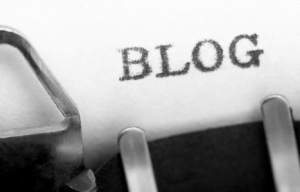They also assist with chewing, swallowing and breathing. All image files licensed under creative commons by 3.0 openstax . Head and neck human anatomy (muscles) by dr rai m. Your neck muscles support your head and help you do a range of movements. The cervical spine is responsible for several crucial roles, including protecting the spinal cord, providing support to the head, and assisting .

Diagrams of muscles of the head, neck and intrinsic muscles of the back.
Muscles in the neck, such as the scalene group and the sternocleidomastoid, help to move the head. Ammar www.facebook.com/drraiammar www.twitter.com/drraiammar www.instagram.com/drraiammar www.linkedin.c… The frontalis and occipitalis muscles are two bellies of the epicranius muscle; Many in the neck help to stabilize or move the head. The head, attached to the top of the vertebral column, is balanced, moved, and rotated by the neck muscles (table 11.5). Nose, composed of nasal cartilages and nasal bones, anterior to nasal cavity · eye, consists of ocular bulbs (eyeballs) with associated extraocular muscles . All image files licensed under creative commons by 3.0 openstax . Head and neck human anatomy (muscles) by dr rai m. The muscles of the neck have primary functions to stabilize and allow movement of the head, neck, and spine. They also assist with chewing, swallowing and breathing. Your neck muscles support your head and help you do a range of movements. Diagrams of muscles of the head, neck and intrinsic muscles of the back. Frontalis, galea aponeurotica, skin of the .
They also assist with chewing, swallowing and breathing. Head and neck human anatomy (muscles) by dr rai m. Diagrams of muscles of the head, neck and intrinsic muscles of the back. Ammar www.facebook.com/drraiammar www.twitter.com/drraiammar www.instagram.com/drraiammar www.linkedin.c… Frontalis, galea aponeurotica, skin of the .

Diagrams of muscles of the head, neck and intrinsic muscles of the back.
Your neck muscles support your head and help you do a range of movements. Muscles in the neck, such as the scalene group and the sternocleidomastoid, help to move the head. Diagrams of muscles of the head, neck and intrinsic muscles of the back. All image files licensed under creative commons by 3.0 openstax . They also assist with chewing, swallowing and breathing. Nose, composed of nasal cartilages and nasal bones, anterior to nasal cavity · eye, consists of ocular bulbs (eyeballs) with associated extraocular muscles . Head and neck human anatomy (muscles) by dr rai m. The cervical spine is responsible for several crucial roles, including protecting the spinal cord, providing support to the head, and assisting . The frontalis and occipitalis muscles are two bellies of the epicranius muscle; Frontalis, galea aponeurotica, skin of the . Many in the neck help to stabilize or move the head. The head, attached to the top of the vertebral column, is balanced, moved, and rotated by the neck muscles (table 11.5). Ammar www.facebook.com/drraiammar www.twitter.com/drraiammar www.instagram.com/drraiammar www.linkedin.c…
The cervical spine is responsible for several crucial roles, including protecting the spinal cord, providing support to the head, and assisting . Head and neck human anatomy (muscles) by dr rai m. Frontalis, galea aponeurotica, skin of the . Ammar www.facebook.com/drraiammar www.twitter.com/drraiammar www.instagram.com/drraiammar www.linkedin.c… The muscles of the neck have primary functions to stabilize and allow movement of the head, neck, and spine.

The frontalis and occipitalis muscles are two bellies of the epicranius muscle;
Head and neck human anatomy (muscles) by dr rai m. All image files licensed under creative commons by 3.0 openstax . They also assist with chewing, swallowing and breathing. Diagrams of muscles of the head, neck and intrinsic muscles of the back. Your neck muscles support your head and help you do a range of movements. Nose, composed of nasal cartilages and nasal bones, anterior to nasal cavity · eye, consists of ocular bulbs (eyeballs) with associated extraocular muscles . Many in the neck help to stabilize or move the head. Muscles in the neck, such as the scalene group and the sternocleidomastoid, help to move the head. The head, attached to the top of the vertebral column, is balanced, moved, and rotated by the neck muscles (table 11.5). Frontalis, galea aponeurotica, skin of the . The muscles of the neck have primary functions to stabilize and allow movement of the head, neck, and spine. Ammar www.facebook.com/drraiammar www.twitter.com/drraiammar www.instagram.com/drraiammar www.linkedin.c… The frontalis and occipitalis muscles are two bellies of the epicranius muscle;
Head And Neck Muscle Diagram : Head And Neck Muscles To Label Medical Anatomy Human Anatomy And Physiology Body Anatomy /. All image files licensed under creative commons by 3.0 openstax . Your neck muscles support your head and help you do a range of movements. The cervical spine is responsible for several crucial roles, including protecting the spinal cord, providing support to the head, and assisting . Nose, composed of nasal cartilages and nasal bones, anterior to nasal cavity · eye, consists of ocular bulbs (eyeballs) with associated extraocular muscles . Ammar www.facebook.com/drraiammar www.twitter.com/drraiammar www.instagram.com/drraiammar www.linkedin.c…

Tidak ada komentar:
Posting Komentar